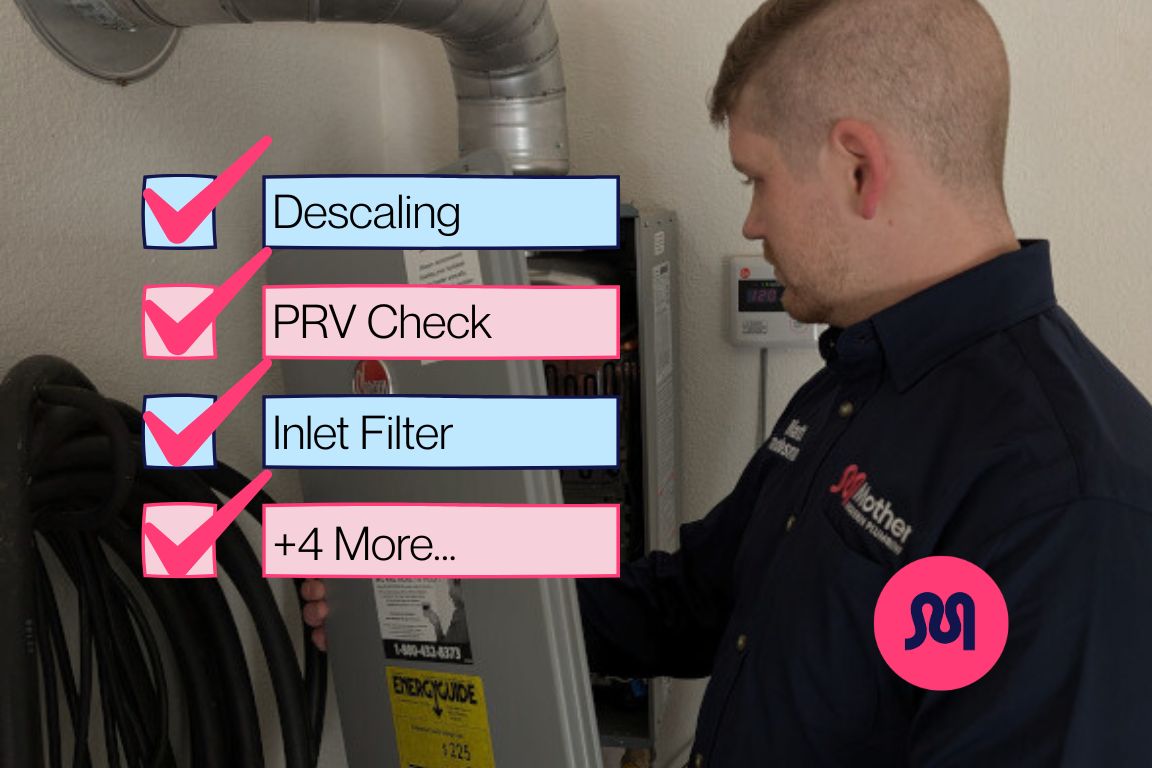Belly in the Sewer Line: Texas Homeowner's Guide

table of contents
table of contents
Texas residents deal with constant ground expansion and settling, thanks to the high clay content in our soil. These frequent changes to your yard regularly cause bellies in sewer lines — a real headache in terms of efficient water flow away from your home.
We asked our staff of licensed Texas plumbers for insights on sewer line bellies — what they are, why they happen, and the problems they cause. Then, we got pro tips on how to fix a belly in your sewer line, and how to prevent them from forming.
Here’s what Texas homeowners should know about sewer bellies:
- Don’t ignore a sagging sewer line. Sags and dips in your main line become bellying — a U-shaped dip in your pipe. This leads to poor flow, clogs and plumbing damage.
- Soil settling is the #1 local cause of bellying. High clay concentrations in Texas soil lead to frequent expansion and contraction. When your soil cracks and settles, sewer bellies are more likely to form.
- Slow drainage is the first sign of a sewer belly. Call a plumber if you notice slow drains or frequent plumbing clogs. Long-term, these issues cause sewer backups into your home.
- Professional plumbers can protect against bellying. Annual sewer pipe inspection and maintenance greatly reduces the risk of a sewer line belly forming.
Schedule a main sewer line inspection today!
{{water-line-break="/services/water-line-break"}}
What Is a Sewer Line Belly?
When a main sewer line sags, dips or collapses, a U-shaped dip forms in the pipe. This action is known as “bellying”.
Sewer lines aren’t pressurized, so they rely on gravity to function properly. Proper downhill grading is vital to their success. “Water doesn’t flow uphill,” as our plumbers say.
Think of a bellied sewer line as anywhere the sewer pipe goes up instead of down. This negatively impacts your home plumbing system’s ability to clear waste, sewage and wastewater.
8 problems caused by a belly in the sewer line
A sewer belly doesn’t just decrease efficiency in your plumbing system — it causes financial, health and safety issues as well.
Here are 8 major problems caused by a belly in your residential sewer line:
- Reduced flow. The primary issue caused by sewer bellies is a drastic reduction of water flow away from your home. This keeps harmful wastewater stagnant in your main line.
- Plumbing system damage. Bellying causes physical strain on your sewer pipe — this leads directly to leaks and cracks in your main line.
- Frequent clogs. One or two clogs a year is nothing to worry about. But a belly in the sewer line creates an environment for frequent blockages in your pipes and drains.
- Bacteria buildup. Stagnant waste in your sewer line creates a breeding ground for harmful bacteria that leaks into your yard.
- Nasty odors. What’s worse than a yard that smells like sewage? A sewer belly creates a foul stench along your main line.
- Sewage backup. As clogs develop and worsen due to bellying, sewage and wastewater have nowhere to go — except back into your home.
- Drain backups. When sewage is blocked by a sewer line dip or clog, it ends up pushing back into your bathroom, kitchen and laundry room drains.
- Structural and foundation damage. Over time, clogs and blockages in your sewer line form leaks around your home. These leaks can create cracks in your slab foundation, damage your pipe system, and weaken the structure of your home.
Protect your home with a leak location inspection!
{{yard-leak-locating="/services/yard-leak-locating"}}
What Causes a Belly in the Sewer Line?
There are 3 primary reasons why a belly might form in your sewer line:
- Most common reason: Soil settling or shifting (shifting soil leads to pipe sagging)
- Tree root intrusion (tree roots growing into or around the main line)
- Poor plumbing installation (poor initial installation may not account for proper grading)
Sewer bellies may also occur due to earthquakes or mudslides, but these natural disasters are far less common.
Ground shifting: the #1 cause of sewer bellies in Texas
In a review of the last 3 years of Tarrant County plumbing service data, we found that shifting and settling clay soil was the primary cause of bellying in local sewer lines.
The high concentration of clay in Texas soil means our yards retain more water than sand or loam soil. Our yards are full of puddles and damp spots when it rains, and quickly dry out and get cracked in the heat.
Unfortunately, this rapid expansion and settling of Texas soil is ideal for pipe bellying. It’s important to schedule regular sewer line inspection with a local plumbing company.
5 Warning Signs of a Belly in the Sewer Line
Thankfully, there are telltale signs of a developing sewer belly that are easy to spot.
Here are 5 warning signs that indicate a potential belly in your sewer line — 3 indoors and 2 outdoors:
- Slow drainage. The first sign of a sewer belly is poor drainage — especially in your bathroom and laundry room.
- Gurgling drains. Our customers often complain about a “gurgling sound” coming from their drains before we discover a bellying issue.
- Increased clogs. If the drains that lead to your sewer line (toilet, shower, tub, sink, garbage disposal) clog on a regular basis, this may indicate a sag in your main line.
- Soggy spots in the yard. Notice more damp areas in your yard than usual — or spots that are way greener than others? These are signs of sewage line damage, and also can indicate a burst or broken pipe.
- Unpleasant odor in the yard. Be aware of sewage smells emanating from your yard (or underneath your feet). This can also indicate a burst pipe.
Is it a belly or a burst pipe? Hire us for yard leak location!
{{yard-leak-locating="/services/yard-leak-locating"}}
Keep an eye on these 5 drains
If you suspect a sag in your sewer line, inspect the drains in your home that lead directly to your main drain pipe. These are the first places you’ll notice bellying symptoms like slow drainage and blockages.
Look at these 5 household drains for signs of a sewer belly issue:
- Bathtubs and/or showers
- Toilets
- Bathroom sinks
- Kitchen sinks (and garbage disposals)
- Washing machine
Annual Sewer Line Inspections Save Thousands of Dollars
Prevention — not repair — is the best way to save money and stress when dealing with bellying.
Sewer line replacement costs $5,000-$12,500 for most Texas homeowners, and sewer line repair projects cost as much as $250 per linear foot.
20 years of routine annual plumbing inspections cost less than one replacement if they save you from a bellied pipe.
How to prevent a bellied sewer pipe with 3 routine steps
Ask your plumbing company to perform the following 3 steps during your annual sewer pipe inspection:
- Sewer camera inspection: A small camera is inserted into your main line to identify any dips, sags or bends — as well as cracks or leaks.
- Hydrostatic testing: Your sewer pipe is pressurized to check for leaks and cracks. This pressure test also indicates any unwanted sags in the line.
- Grease eating drain cleaning: A grease eating drain cleaner rids your main line of solid fats, oils and grease that create harmful clogs. Our plumbers use Endure, an awesome bacterial drain cleaner that converts organic waste into carbon dioxide gas.
Belly In Your Sewer Line? Call Us in Tarrant County
One sewer replacement job can cost Texas homeowners $12,500 or more. Stop that dip in your main line before it starts!
Schedule preventative maintenance and annual inspections to avoid a bellied pipe. If you already have one, get it fixed ASAP before it causes structural damage or a burst pipe.
Ask us for hydrostatic testing, a sewer camera inspection and advanced grease eating drain cleaner treatment. Our local plumbers are experts in dealing with clay-rich Texas backyards, and we’ll keep your pipes safe from any shifts in your soil.
Set up your sewer belly protection plan!
{{water-line-break="/services/water-line-break"}}




